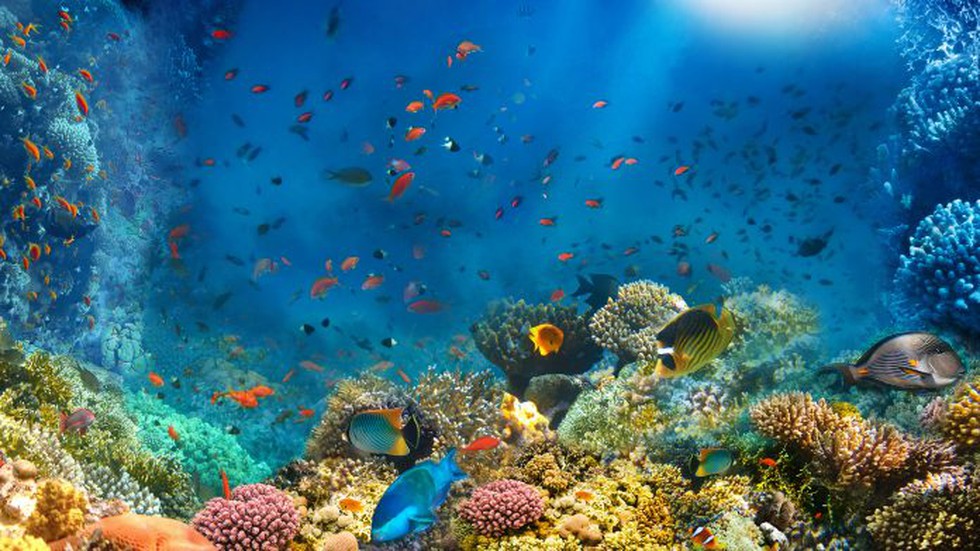
About IndOBIS:
- The Indian Ocean Biodiversity Information System (IndOBIS) is the Indian regional node of the global Ocean Biodiversity Information System (OBIS).
- It is hosted by the Centre for Marine Living Resources & Ecology (CMLRE), Kochi.
- IndOBIS collects data on taxonomically resolved marine species occurrence records from the Indian Ocean and contributes to the OBIS as one of the 30 regional nodes of the Ocean Biodiversity Information System OBIS.
- What is OBIS?
- It is one of the largest global repositories of information on marine species, containing millions of records from thousands of datasets contributed by researchers, governments and organisations worldwide.
- It provides detailed information on species distribution across the world's oceans, including data on their occurrence, habitats, and environmental parameters.
- It offers tools and services that allow users to search, visualise, and download biodiversity data.
- It is supported by a network of nearly 30 regional nodes contributing data while ensuring the data's quality and accessibility.
- It is a ready reference resource in marine science, conservation and education.
- It has been set up by the Intergovernmental Oceanographic Commission (IOC) of UNESCO for promoting marine science, conservation, and sustainable development.
- It is now an integral component of the International Oceanographic Data and Information Exchange (IODE) of IOC.
2. Key facts about Brunei
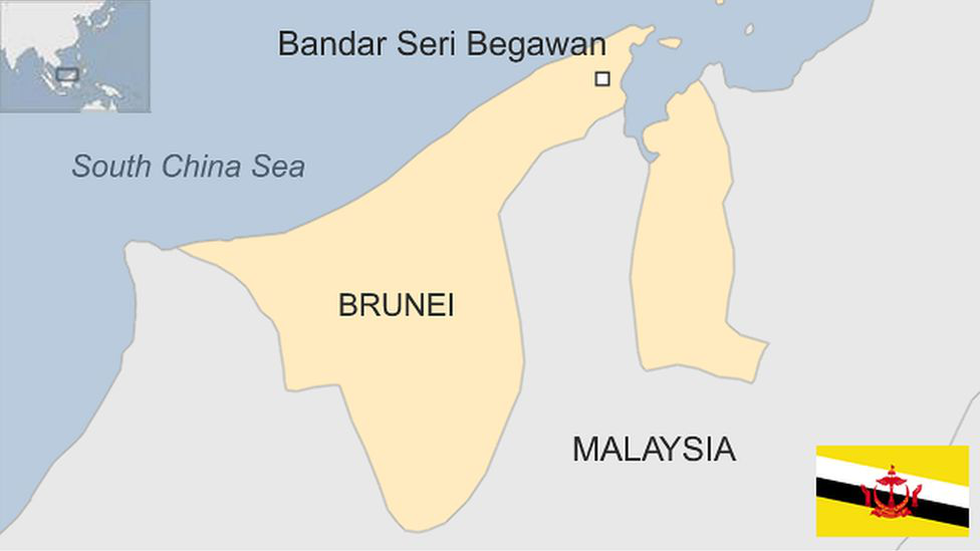
About Brunei:
- Location: It is located along the northern coast of Borneo Island in Southeast Asia.
- It is situated both in the Northern and Eastern hemispheres of the Earth.
- Brunei is bordered by the South China Sea in the north and on all other sides by Malaysia. Brunei is divided into two non-contiguous parts by a portion of the Malaysian State of Sarawak. It shares its maritime borders with China and Malaysia.
- Capital: Bander Seri Begawan – the capital and largest city of Brunei.
- Mountain: Bukit Pagonis the highest point in the country at 6,069 ft along the border with Malaysia in the eastern mountainous region.
- Rivers: Numerous rivers drain the land, including the Belait, Pandaruan and Tutong.
- It is also a major oil producer in Southeast Asia.
- Population: Brunei citizens comprise about 76% of the population, with the remaining being permanent or temporary residents. More than 80% of the population is ethnically Malay or Chinese.
- Currently, approximately 14,000 Indians are residing in Brunei. The contribution of Indian doctors and teachers to the growth and development of Brunei’s healthcare and education sectors has been well acknowledged.
3. e-Shram Portal
About e-Shram Portal:
- It was launched by the Ministry of Labour and Employment in 2021 for the registration and creation of a comprehensive National Database of Unorganized Workers.
- It is a “One-Stop-Solution” for Unorganised Workers of the country.
- The registration in the portal is fully Aadhaar verified and Aadhaar seeded.
- Any unorganised worker can register himself or herself on the portal on a self-declaration basis.
- It allows an unorganised worker to register himself or herself on the portal on a self-declaration basis, under 400 occupations in 30 broad occupation sectors.
- The Ministry aims to facilitate access to various social security schemesbeing implemented by various Ministries/Departments for the benefit of the unorganised workers through the e-Shram portal.
- The portal is presently integrated with the National Career Service(NCS) Portal, Skill India Digital Hub (SIDH), myScheme portal and Pradhan Mantri Shram Yogi Mandhaan (PMSYM) scheme.
4. AgriSURE Fund

About AgriSURE Fund:
- Agri Fund for Start-ups & Rural Enterprises (AgriSURE) is an innovative fund which is a pioneering step toward revolutionizing the agricultural landscape in India.
- Focus area: It mainly focuses on technology-driven, high-risk, high-impact ventures.
- It is designed to fuel growth and foster innovation in the agricultural and rural start-up ecosystem.
- Funding Pattern: A Blended capital fund of ₹750 crore with SEBI Registered Category II, Alternative Investment Fund (AIF), contributions from the Government of India is ₹250 crore, NABARD is ₹250 crore and ₹250 crore is being mobilized from banks, insurance companies and private investors.
- Its main focus areas include promoting innovative, technology-driven initiatives in agriculture, enhancing the farm produce value chain, creating new rural ecosystem linkages and infrastructure, generating employment and supporting Farmers Producer Organisations (FPOs).
- The fund would encourage entrepreneurshipthrough IT-based solutions and machinery rental services for farmers, driving sustainable growth and development in the agricultural sector.
- NABVENTURES a fully owned subsidiary of NABARD will act as the fund manager.
5. Phrynarachne decipiens
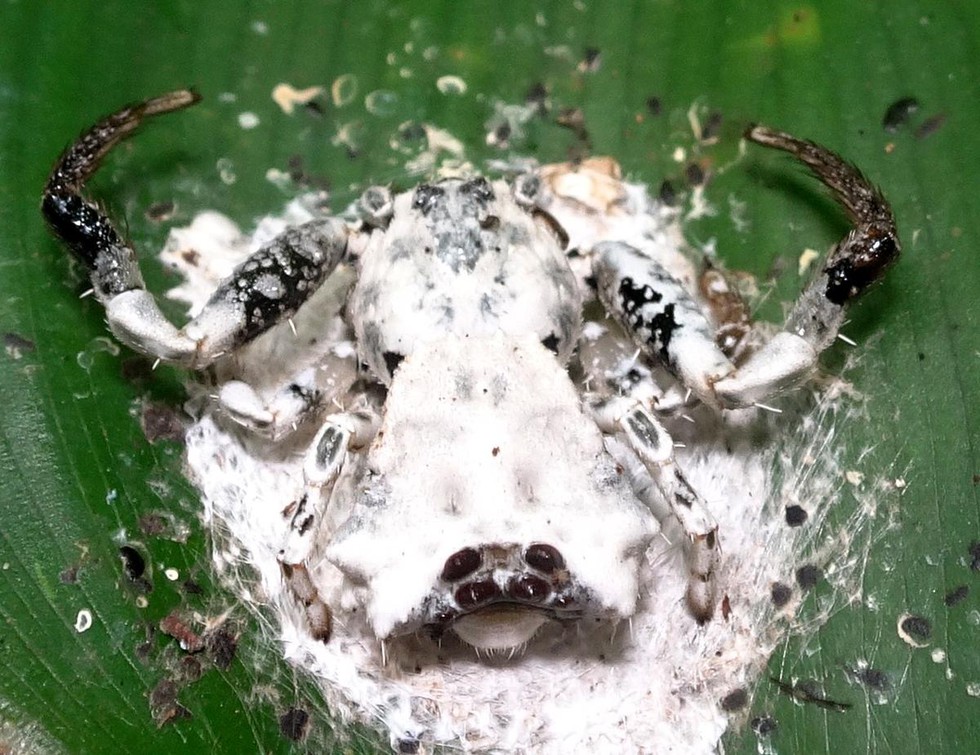
About Phrynarachne decipiens:
- It is better known as the bird dung or bird-dropping crab spider.
- Distribution: It was known to be distributed in Malaysia and Indonesia’s Java and Sumatra.
- It has been recorded for the first time in the country from Assam’s Sonapur in the Kamrup (Metropolitan) district and the Chirang Reserve Forest in the Kokrajhar district.
- The spider is usually seen lying motionless 1-2 ft above the ground on the upper side of broad leaves.
- The chalky white colour of the spider and whitish deposition (its web) on the leaves, looking like bird excreta, make it very difficult to be sighted
- Feature: It has the stout spermathecae (a sac-like organ in the female reproductive tract that stores sperm received during copulation) with posterior heads almost touching each other.
- The genus Phrynarachne presently consists of 35 accepted species of which three – P. ceylonica, P. ceeliana, and P. Tuberosa – before the bird dung crab spider recorded and re-described based on female specimens collected from Assam.
What are arachnids?
- These are members of the arthropod group that includes spiders, daddy longlegs, scorpions, and the mites and ticks.
6. Drug Repurposing
About Drug Repurposing:
- It is the technique of using an existing drug or drug candidate for a new treatment or medical condition for which it was not indicated before.
- It is also called drug repositioning or drug reprofiling, which is the identification of new therapeutic uses for existing or investigational drugs.
- It was initially developed to treat a different medical condition. It has been described as a serendipitous process that happens unexpectedly.
- The goal of drug repurposing is to quickly identify compounds with an established safety profile and known therapeutic advantages that may prove efficacious for other indications.
- Applications: Pharmaceutical companies are undertaking drug repurposing projects for rare diseases, oncology, infectious and autoimmune diseases and more.
- Significance: Drug repurposing can significantly reduce timelines and costs compared with de novo drug development.
Highlights of the research
- This research group has shown that Selegiline (L-deprenyl), an antidepressant drug from a class of drugs called monoamine oxidase (MAO) inhibitors, might be applied as anticancer therapeutics for breast cancer.
- Selegiline was found effective in killing estrogen and progesterone-positive (ER+ & PR+) as well as triple-negative breast cancer (TNBC).
7. Su-30MKI Fighter Jet
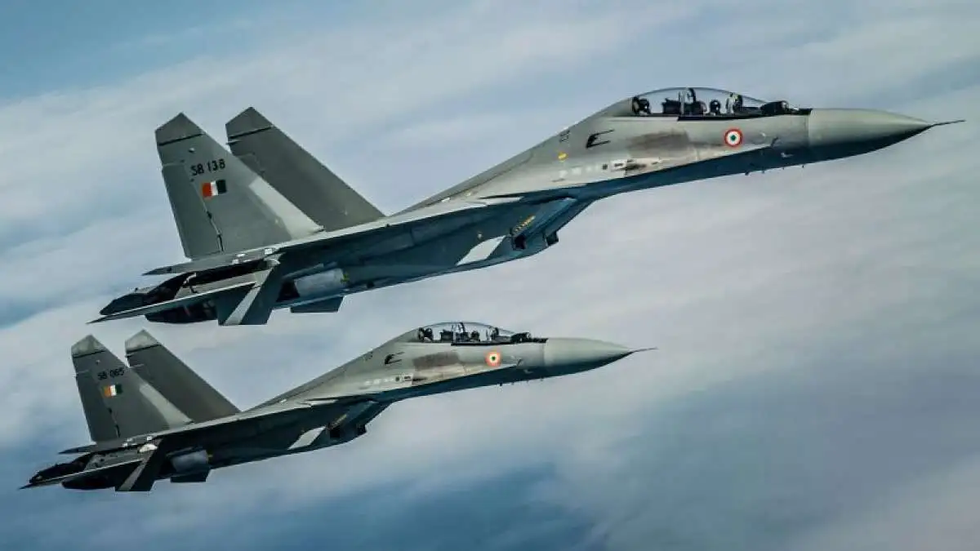
About Su-30MKI Fighter Jet:
- It is a multirole combat fighter aircraft jointly developed by the Sukhoi Design Bureau and Hindustan Aeronautics Limited (HAL) for the Indian Air Force (IAF).
- Based on the Su-30 fighter aircraft, Su-30MKI is equipped with thrust vectoring control and canards.
- Features
- It is a fourth-generation fighter jet powered by two AL-31 FP aero engines. AL-31FP is a high-temperature turbojet by-pass engine of modular design.
- The Su-30MKI fleet of IAF was fitted with an air-launched version of BrahMos supersonic cruise missiles and was successfully tested in November 2017.
- It is fitted with a Tarang Radar Warning Receiver (RWR) indigenously developed by the Defence Research and Development Organisation (DRDO).
- The aircraft has a maximum unrefuelled flight range of 3,000 km. The in-flight refuelling system of Su-30MKI provides a maximum range of 8,000km with two refuellings.
- Manufacturer: Hindustan Aeronautics Limited (HAL)
8. Key Facts about Krishna River
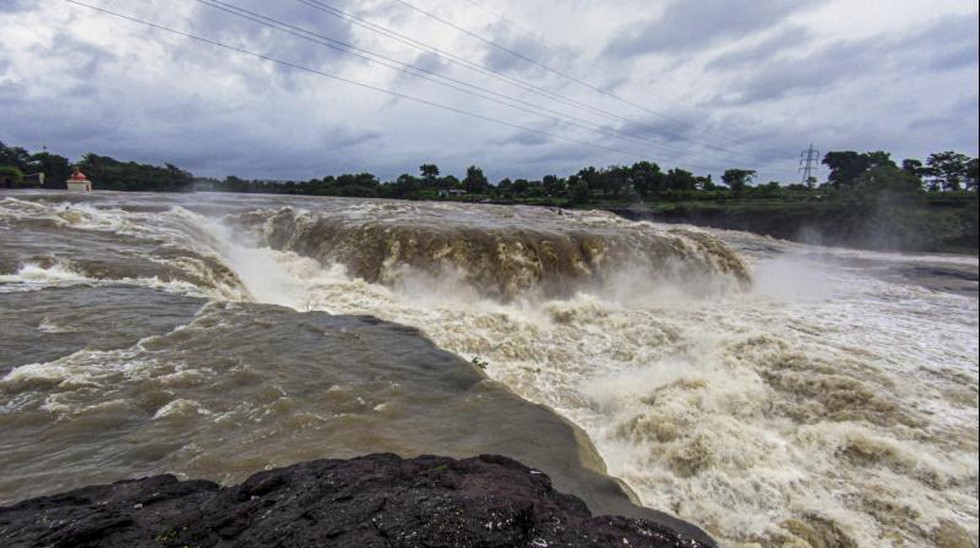
About Krishna River:
- It is a river in south-central India.
- In terms of water inflows and river basin, Krishna is the fourth biggest river after Ganga, Godavari and Brahmaputra.
- Course:
- Origin: It rises in western Maharashtra state in the Western Ghats range near the town of Mahabaleshwar, about 64 km from the Arabian Sea.
- It passes through Maharashtra, Karnataka, Telangana, and Andhra Pradesh and meets the Bay of Bengal at Hamasaladeevi in Andhra Pradesh, on the east coast.
- Total Length: 1300 km
- The Krishna River Basin extends over an area of about 258,948 sq. km, which is nearly 8 per cent of the total geographical area of the country.
- It is bounded by the Balaghat range on the north, by the Eastern Ghats on the south and the east, and by the Western Ghats on the west.
- Tributaries: Its principal tributaries joining from the right are the Ghatprabha, the Malprabha, and the Tungabhadra, whereas those joining from the left are the Bhima, the Musi and the Munneru.
9. Bandipur Tiger Reserve
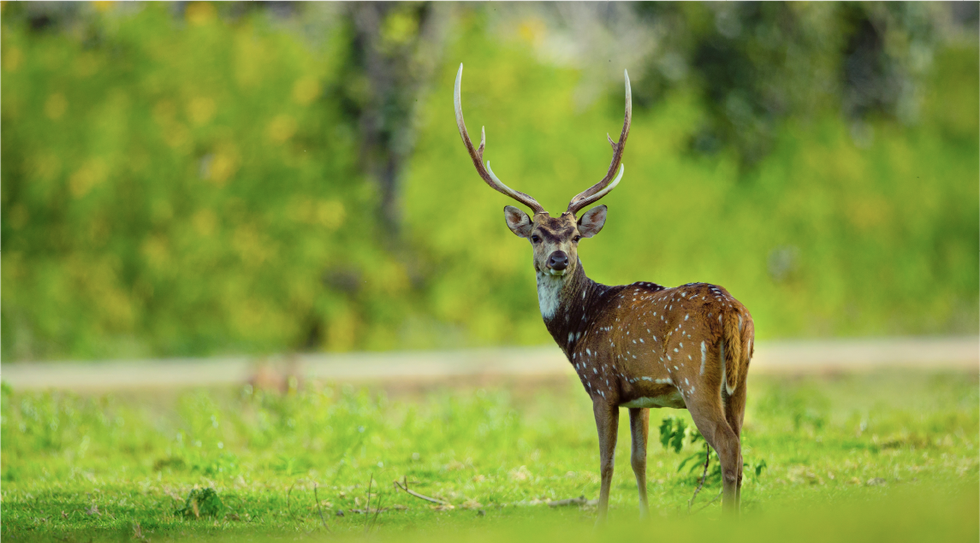
About Bandipur Tiger Reserve:
- Location: It is situated in two contiguous districts (Mysore and Chamarajanagar) of Karnataka and located in the tri-junction area of the States of Karnataka, Tamil Nadu, and Kerala.
- Geographically, it is an “ecological confluence” of the Western and Eastern Ghats.
- History:
- It was once a hunting ground for the rulers of the neighbouring kingdom of Mysore.
- It was established in the year 1931 as Venugopala Wildlife Park by the Maharaja of Mysore.
- It was then expanded with the name Bandipur Tiger Reserve under Project Tiger in 1973.
- It is part of the larger Nilgiri Biosphere Reserve, which is recognized as a UNESCO World Heritage Site.
- BTR is surrounded by:
- Nagarahole Tiger Reserve (Tamil Nadu) in the North West (Kabini Reservoir separates the two).
- Mudumalai Tiger Reserve (Tamil Nadu) in the South.
- Wayanad Wildlife Sanctuary (Kerala) in the South West.
- Rivers: It is surrounded by River Kabini in its north and River Moyar in its south.
- Climate: Bandipur has a typical tropical climate with distinct wet and dry seasons.
- Vegetation: It comprises diverse vegetation of dry deciduous to tropical mixed deciduous.
- Flora: It includes rosewood, Indian kino tree, sandalwood, Indian laurel, clumping bamboo, giant clumping bamboo, etc.
- Fauna:
- It is a shelter for the largest population of wild Asian elephants in South Asia.
- It comprises other mammals such as Bengal tiger, gaur, sloth bear, golden jackal, dhole, four-horned antelope, etc.
10. Review Petition

About Review Petition:
- When a judgment is passed by a court, the doctrine of functus officio applies to it.
- This Latin doctrine means that if the judgment in a case has been pronounced or an order has been made following due process of law, in such circumstances, the case cannot be reopened.
- The right to file a review petition is an exception to this doctrine.
- The word “review” means to examine again.
- Article 137 of the Constitution gives the Supreme Court the power to review any of its judgments or orders.
- The court has the power to review its rulings to correct a “patent error” and not “minor mistakes of inconsequential import”.
- Similarly, High Courts have also been given the power to review their judgments under Article 226 of the Constitution. However, it can only be invoked when there is a breach of law or violation of the Constitution.
- Grounds for review petition: In a 2013 ruling, the Supreme Court itself laid down three grounds for seeking a review of a verdict it has delivered.
- the discovery of new and important matter or evidence which was not within the knowledge of the petitioner or could not be produced by him;
- mistake or error apparent on the face of the record; or
- any other sufficient reason, which means a reason that is analogous to the other two grounds.
- Procedure:
- Who can file a review petition? It is not necessary that only parties to a case can seek a review of the judgment on it. Any person aggrieved by a ruling can seek a review.
- Time frame: As per 1996 rules framed by the Supreme Court, a review petition must be filed within 30 days of the date of judgment or order.
- While a judgment is the final decision in a case, an order is an interim ruling that is subject to its final verdict.
- The petition should clearly outline the grounds for review and include legal arguments and supporting precedents.
- In general, review petitions in court are typically considered without oral arguments from lawyers. Instead, they are reviewed "through circulation" by the judges in their chambers. There are exceptional cases where an oral hearing may be permitted.
- The review petition should be circulated to the same bench that delivered the judgment.
- However, if a Judge or bench is not available who delivered the original order/ judgment due to various reasons, any other competent Court is authorized and empowered to deal with the review application.
- The Supreme Court will assess the petition to determine if it qualifies for review. In cases where the arguments lack substantial merit, the petition may be rejected.
- If the review petition has been dismissed by the Court, then the aggrieved person is provided with a relief of Curative Petition.


























































































































































.png)
.png)
.png)
.png)
.png)


.png)
.png)
.png)





.png)
.png)






.png)
.png)
.png)
.png)
.png)
.png)
.png)
.png)
.png)

.png)







.png)
.png)


.png)
.png)
.png)


.png)

.png)
.png)





.jpg)

.png)
.png)


.png)

.png)
.png)
.png)

.jpg)

.jpg)


.png)

.png)
.png)
.png)
.png)
.png)
.png)
.png)
.png)
.png)
.png)




.png)

.png)





.png)
.png)
.png)
.png)
.png)
.png)
.png)
.png)
.png)
.png)
.jpg)
.jpg)

.png)
.png)
.png)
.png)
.png)
.png)
.png)
.png)
.png)
.png)
.png)
.png)
.png)
.png)
.png)
.png)
.png)
.png)
.png)
.png)
.png)
.png)



.png)
.png)

.jpg)
.jpg)


.jpg)
.jpg)
.jpg)
.jpg)
.jpg)

.jpg)








.jpg)
.jpg)
.jpg)
.jpg)
.jpg)

















.jpg)
.jpg)







.jpg)


















.jpg)
.jpg)






























































































.jpg)
.jpg)


























.jpg)

.jpg)










.jpg)








.jpg)




.jpg)










.jpg)


















.jpg)












































.jpg)














.jpg)
.jpg)
.jpg)





.jpg)

.jpg)
.jpg)





































































.jpg)


































.jpg)
.jpg)
















































.jpg)












.jpg)


.jpg)




.jpg)
.jpg)
.jpg)

.jpg)
.jpg)
.jpg)
.jpg)

.jpg)
.jpg)
.jpg)

.jpg)
.jpg)
.jpg)
.jpg)
.jpg)
.jpg)
.jpg)
.jpg)

.jpg)


.jpg)
.jpg)
.jpg)
.jpg)
.jpg)
.jpg)
.jpg)
.jpg)
.jpg)
.jpg)











.jpg)
.jpg)





.jpg)
.jpg)
.jpg)
























.jpg)
























.jpg)









.jpg)
.jpg)







.jpg)
.jpg)









































.jpg)
.jpg)
.jpg)
.jpg)
.jpg)

.jpg)
.jpg)
.jpg)
.jpg)
.jpg)


.jpg)
.jpg)
.jpg)
.jpg)
.jpg)

.jpg)
.jpg)
.jpg)
.jpg)
.jpg)
.jpg)
.jpg)
.jpg)
.jpg)
.jpg)
.png)

.png)
.png)

.png)
.png)
.png)
.png)


.jpg)
.jpg)

.jpg)
.jpg)
.jpg)

.png)
.png)
.png)
.png)
.png)
.png)
.png)

.png)
.png)
.png)
.png)
.png)
.png)
.png)
.png)
.png)
.png)





































































-min.png)



.png)




.png)








































